Europe seems to receive all of the praise for being rich in history and culture — and this just isn’t fair. True, the continent boasts a centuries-long and storied past, but America’s history — which stretches well beyond the New World discovery with its many ancient Indigenous civilizations — is plenty compelling too. Even in the last 400 years, America has woven a story that is dynamic, complex and controversial.
The following cities — steeped in the stories of Native American tribes, early English settlers and critical wartime battles — came out on top.
Europe, move over.
10. Salem, Massachusetts
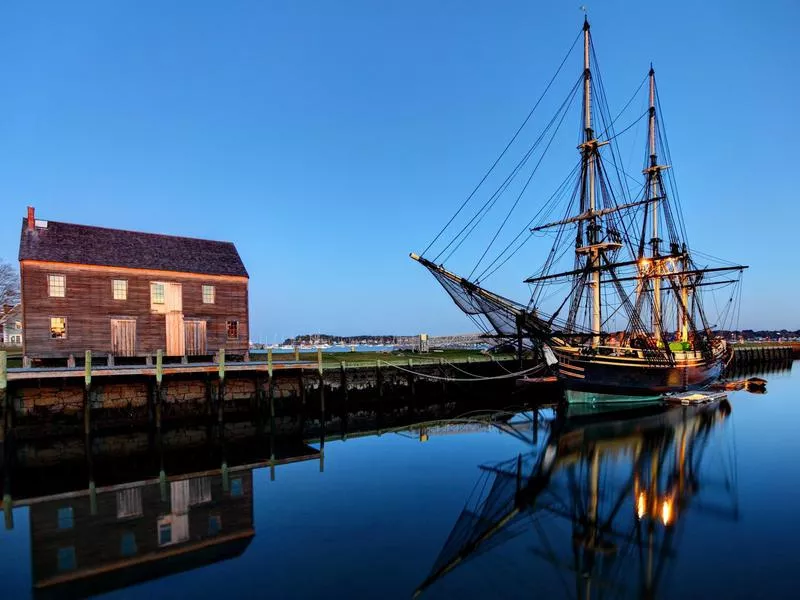
Getty Images
Salem is notorious for the eponymous witch trials that took place there nearly 350 years ago, during which 24 women accused of witchcraft were murdered — an event that continues to fascinate and horrify today.
Because of this dark history, Salem is, unsurprisingly, most popular around Halloween. But the history of the city goes well beyond witches — Salem has strong maritime ties, dating back to its founding in 1626 by Puritans, and was once a popular stomping ground for pirates, who liked to frequent the local pubs.
This history is best enjoyed by following the Heritage Trail, a red line that courses past the town’s main attractions. Salem is relatively small and easily walkable, making educational exploration easy.
Best Historic Attraction — Salem Witch Museum
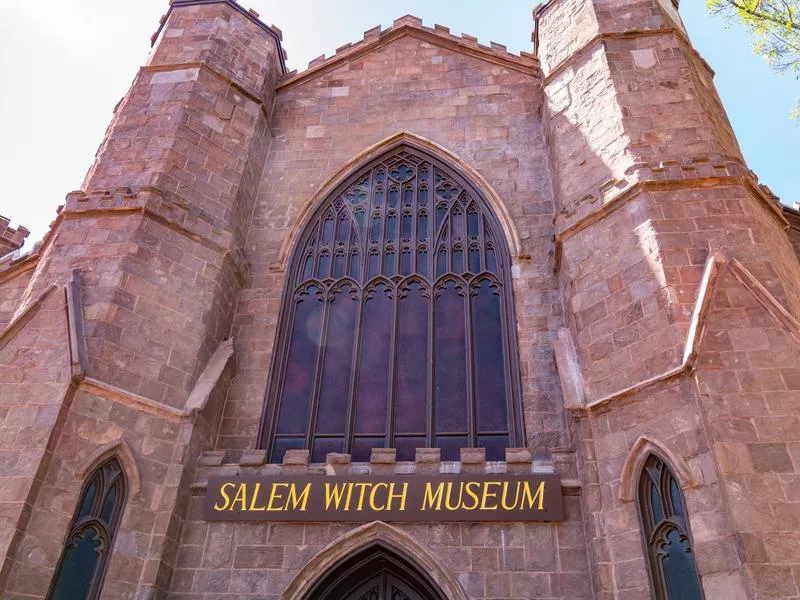
Getty Images
Salem’s best historic attraction tells the story of the famous witch trials through 13 compelling life-size dioramas. The main presentation is based on real trail documents from 1692, recreating the seditious web of lies and intrigue that led to the Salem Witch Hunt.
The museum takes visitors through the changing interpretations of witches, the stereotypes and the truth, and witchcraft practice today. The exterior of the museum is an eerie Gothic facade, preceded by the domineering statue of Roger Conant, the founder of Salem.
9. St. Augustine, Florida
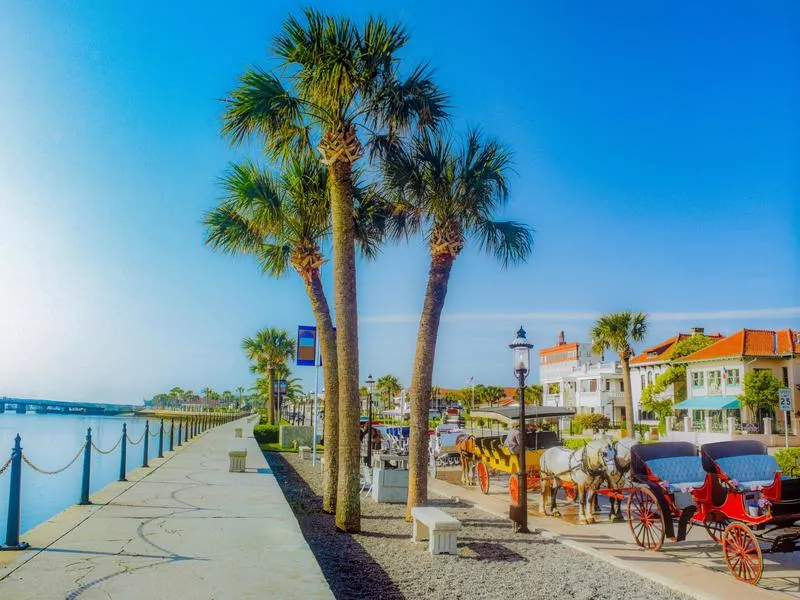
Getty Images
History is around every corner in St. Augustine. The oldest continuously occupied settlement in the U.S. has many fascinating stories to tell — like the time, in 1513, explorer Ponce de Leon came ashore nearby and named the land he found la Florida, after Spain’s Easter celebration “Pascua Florida,” or Feast of Flowers. Or when, in 1586, Sir Francis Drake led an infamous and devastating raid against Spanish settlers.
Today, mom-and-pop boutiques, art galleries and restaurants line St. George Street, the city’s central thoroughfare, where historic sites sit alongside modern cafes under palm trees and Spanish moss.
The Colonial Quarter, on St. George in the downtown section, is divided into four main areas to represent the different colonial eras: the Spanish First City, Spanish Fortified Town, Spanish Garrison Town and British Colony. These different divisions are the ideal jumping-off point before heading to Castillo de San Marcos.
Best Historic Attraction — Castillo de San Marcos
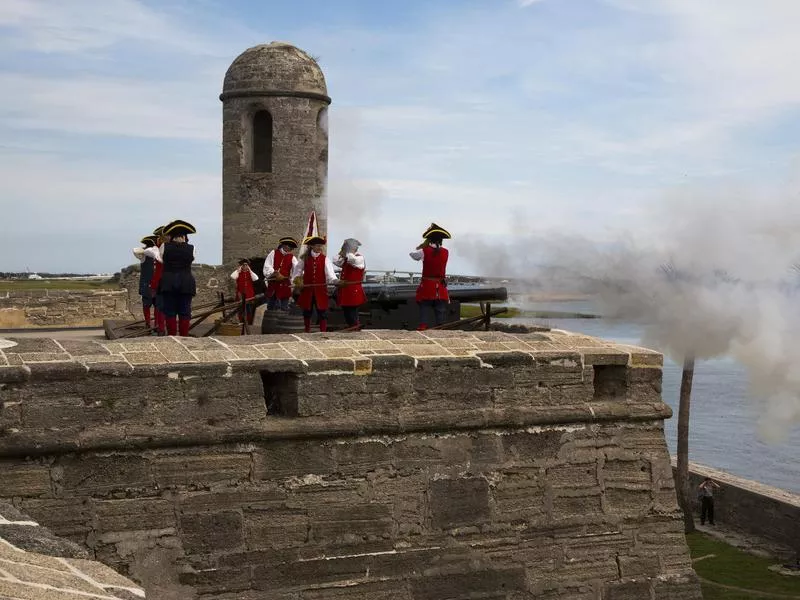
Getty Images
The only remaining 17th-century fort in the country, the coquina-constructed bastion of Castillo de San Marcos stands proud in the northern part of St. Augustine, along the shores of the Atlantic.
Once the first layer of protection against foreign nations and pirates, the fort is now the city’s most beloved tourist attraction. The easiest way to access the monument is by trolley or foot from the Colonial Quarter. Guests can watch a cannon-firing demonstration offered multiple times a day.
If they squint their eyes, they might just see three billowing white sails on the horizon…
8. Plymouth, Massachusetts

Getty Images
Famous for being the birthplace of Thanksgiving (though this feast was nowhere near as romanticized as we modern-day Americans imagine it), Plymouth is steeped in early colonial history.
Plymouth Rock, a weathered granite outcropping, is supposedly where the pilgrims aboard the “Mayflower” took their first steps on North American soil. Downtown Plymouth is quaint New England at its finest, with colonial-style bed-and-breakfasts and the historic homes of sea captains lining its manicured streets. Of course, a visit to Massachusetts is not complete without indulging in a warm cup of clam chowder, available at the town’s many throwback-styled cafes and taverns.
Want to immerse yourself in America’s past? According to Erin Shields, U.S. News' managing editor, “One of the best ways to soak up the area’s history is on a tour: walking tours, nighttime tours and ghost tours are all available.”
Best Historic Attraction — Plimoth Plantation
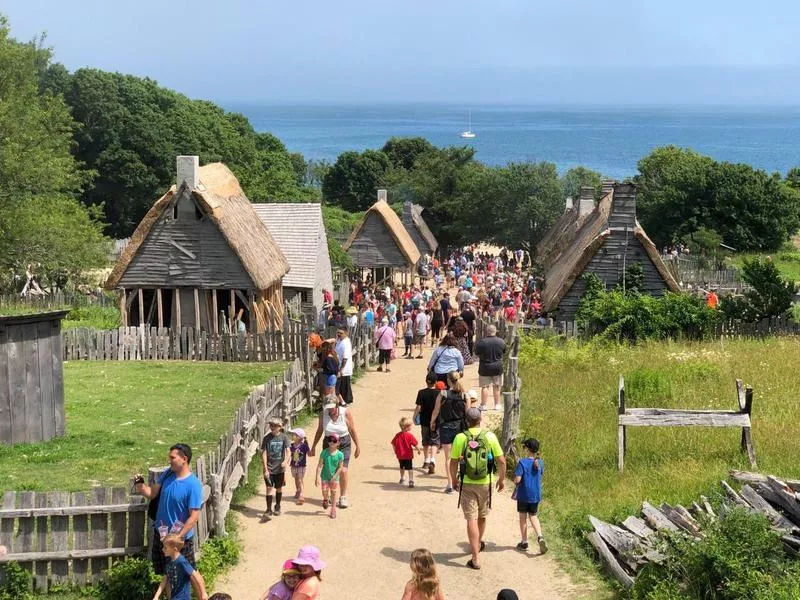
Getty Images
Instead of opting for Plymouth Rock, visit Plimoth Plantation for a more authentic and informative retelling of the pilgrim landing. The living-history museum brings visitors through a 17th-century English village and the Native American Wampanoag Homesite.
Both of these are not the real villages from the pilgrim days, but meticulous recreations of the original sites 2.5 miles to the north. At the plantation, visitors can wander through live reenactments depicting the daily life of both pilgrims and Native Americans, dressed in periodic clothing and speaking from a modern perspective on society 400 years ago.
Step back in time by grinding corn in a hollowed-out tree trunk mortar, or wandering inside a traditional nush metu (bark-covered hut).
7. Savannah, Georgia
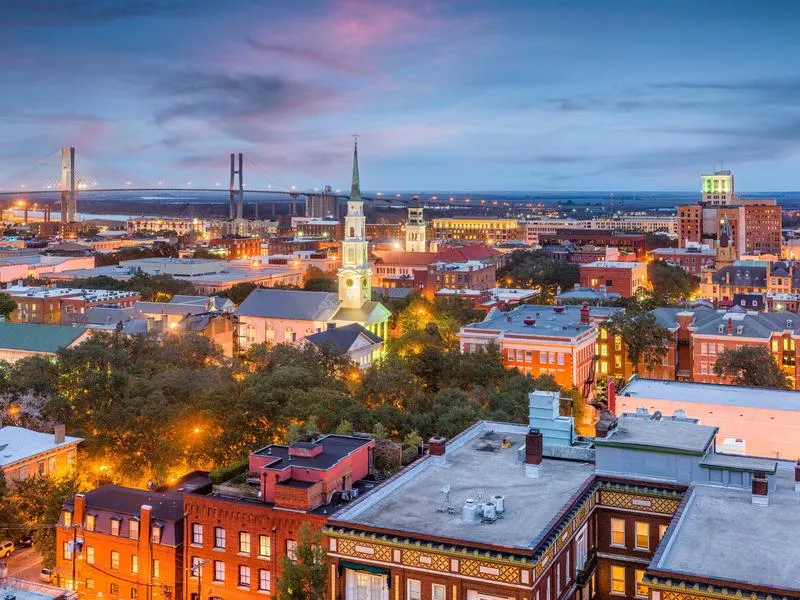
Getty Images
In 1733, General James Oglethorpe landed where Savannah now resides, naming the 13th and final colony “Georgia” after England’s King George II. Savannah would become the state’s first city, and today wears its long history with pride.
Once an enclave of Georgia’s elite class, Savannah is homier now, open to all visitors yet still maintaining the charm of quaint squares under canopies of moss-adorned oaks and blooming azaleas, caressed by soft jasmine breezes. Although similar to Charleston in many ways — a reason for the two cities’ famous rivalry — Savannah is a quieter imagining of its northern neighbor.
Legions of young creatives populating the city have contributed to an eccentric evolution and some of the best art in the country, developed by students at the Savannah College of Art and Design and prominently displayed at ubiquitous art fairs.
Savannah is also the grounds for many ghost tours, which creep through spooky graveyards and decrepit 1800s houses.
Best Historic Attraction — Forsyth Park
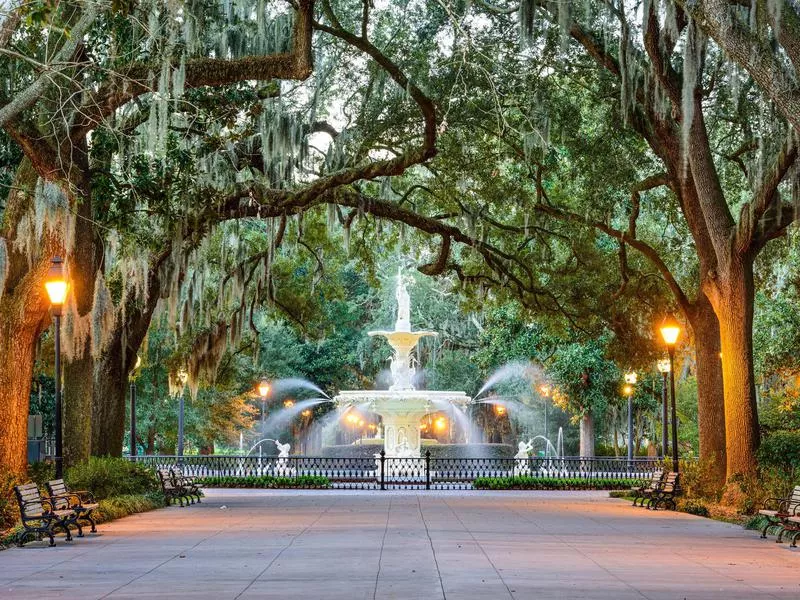
Getty Images
Forsyth Park is the beating heart of historic Savannah. The 30-acre space is within walking distance of many old houses and museums, as well as quirky restaurants like Mrs. Wilkes’ Dining Room, dishing out old-fashioned family-style cooking.
The park is anchored by Forsyth Fountain, a white-stone eye-catcher, and dotted with many monuments from the Civil War and Spanish American War. It’s a picturesque spot for a mid-day picnic between bouts of Savannah exploration, with plenty of shade provided by the towering oak trees, including the 300-year-old Candler Oak.
The Garden of Fragrance is another one of those only-in-Savannah oddities, filled with scented flowers and plants for visually impaired travelers; lemon trees, witch alder, cape jasmine and ginger lily create an olfactory experience.
6. Charleston, South Carolina
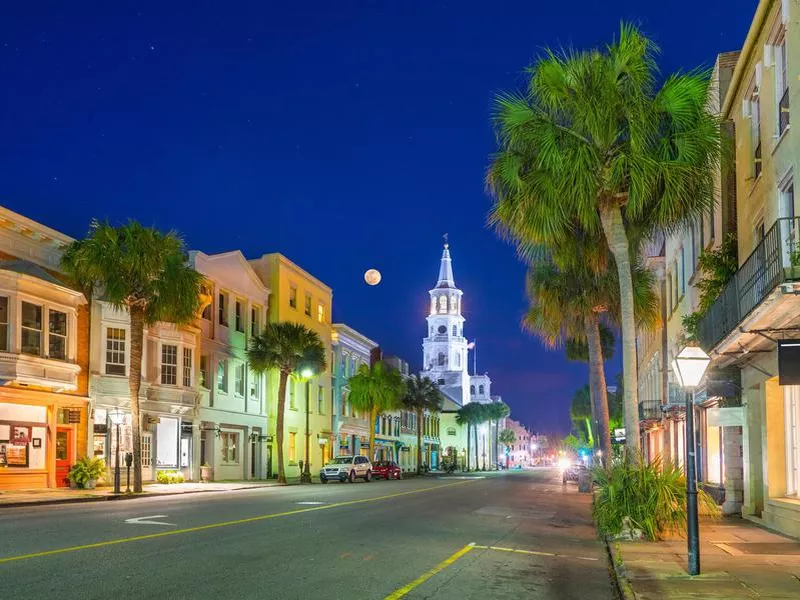
Getty Images
The Holy City doesn’t shy away from its Southern charm reputation. And a long and storied history is a key part of the city’s appeal.
An attack on Charleston's Fort Sumter by South Carolina secessionists played a pivotal role in the start of the Civil War. Today, you can see this famous fortification from one of the city’s many seaside restaurants.
A stroll down King Street provides numerous Southern outfitters for browsing, indulgent eateries (seriously, a vacation to Charleston should revolve around the food options), lively bars and boutique hotels. This main street is often crowded, but a venture off to a side road will bring you into quieter avenues to find many hidden gems.
Charleston is an easily walkable city, so you can wander your way down to Battery Park.
Best Historic Attraction — Battery Park
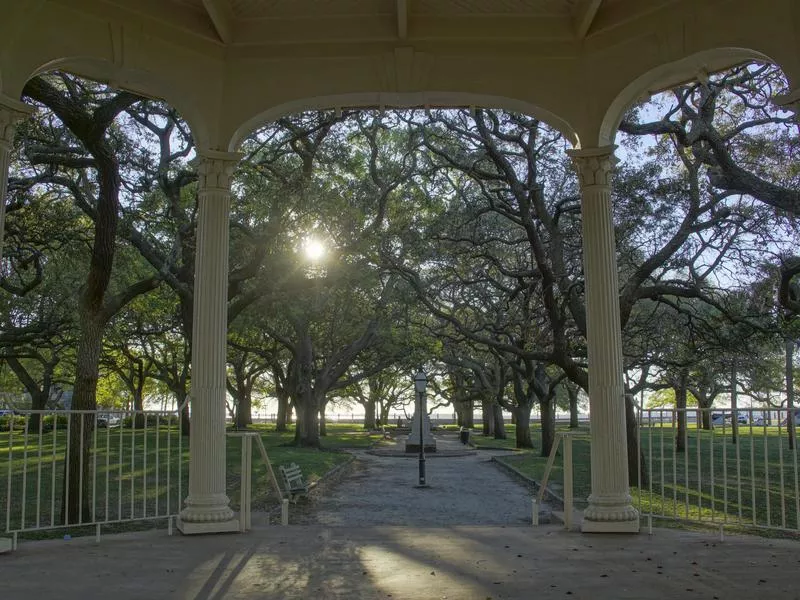
Getty Images
Battery Park is home to rows of Antebellum-era mansions, vestiges of old money opulence on the southern end of Charleston’s peninsula. At the tip of the neighborhood is the eponymous park, a shaded oasis with cannons, statues and a large veranda.
There are a number of houses in Battery Park open for tours, including Middleton Place, the Aiken-Rhett House Museum and the Nathaniel Russell House Museum. These tours bring travelers through historic residences, all delicately preserved, with special stops on the walkaround porches that overlook the harbors.
5. Williamsburg, Virginia

Getty Images
This is not the hipster mecca of Williamsburg in Brooklyn, but the old colonial outpost in Virginia.
All the way back in 1699, the city became the Virginia Colony’s second capital (after Jamestown), deriving its name from the ruling King William III. It would go on to serve as an early colonial hub and center of learning, educating the likes of future Presidents Thomas Jefferson, James Monroe and John Tyler at its College of William and Mary (still around today).
Whereas many cities on this list, like Charleston and Boston, have evolved into cosmopolitan destinations, Williamsburg stays very much rooted in its pre-revolutionary history — the entire city is a veritable living museum.
Here, travelers will walk the same paths that the Founding Fathers once marched, serenaded by beating drums and fifes; watch theatrical revolutionary reenactments; and wander through the halls of colonial manors.
Williamsburg did not actually embark on restoration overhauls until the 20th century, but visitors will not be able to tell a difference. As a bonus for history buffs, the city is also an easy ferry ride from Virginia's other historic centers of Jamestown and Yorktown.
Best Historic Attraction — Colonial Williamsburg
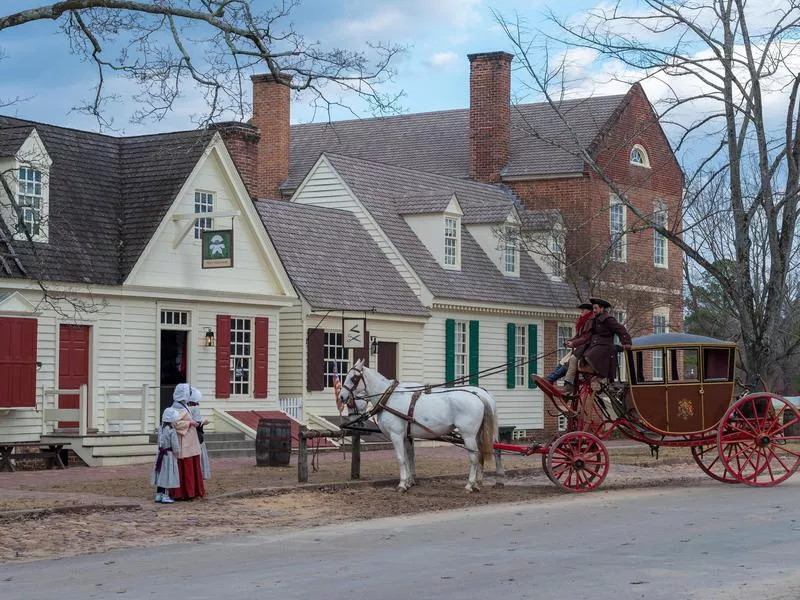
Getty Images
Colonial Williamsburg, the attraction, is an expert recreation of colonial Williamsburg, the city from hundreds of years ago. Shopkeepers, politicians, soldiers and other townspeople greet visitors around the city, representing real characters who once lived there. There are more than 20 guided and self-guided tours around the historic theme park, all informative, ranging in subject matter from ghosts to furniture.
The most popular sites include the Governor’s Palace, once the symbol of British colonial power; Raleigh Tavern, secret meeting place for the whispered talks of revolution; and the Capitol building, where Virginia voted for independence in 1776. There is so much to see and do here that we recommend purchasing a multi-day pass, $50.99 for adults (not cheap, but worth it).
4. Gettysburg, Pennsylvania
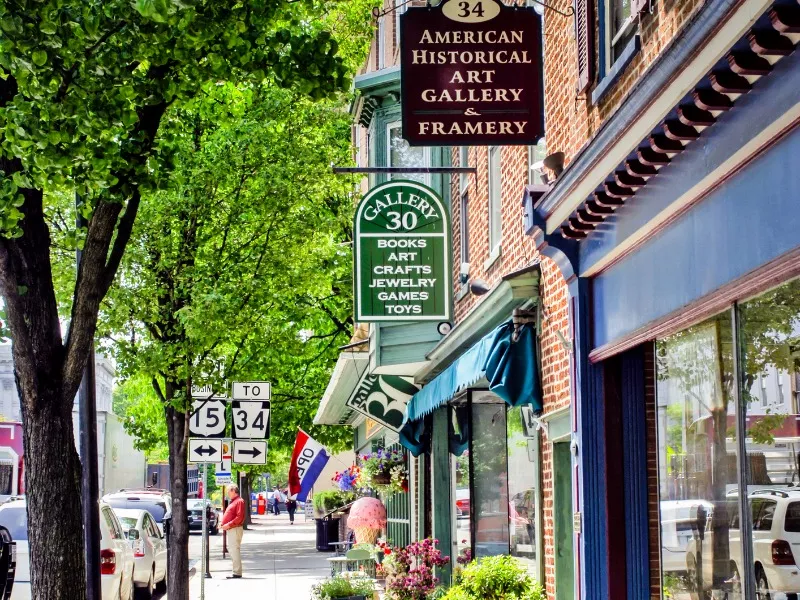
Getty Images
Similar to Williamsburg and its revolutionary ties, Gettysburg’s enduring appeal is rooted in its Civil War history. Travelers predominantly come to learn about and see the Gettysburg Battlefield, the site of the bloodiest battle in the Civil War and a pivotal Union victory (during the crucial fight, the Confederacy lost 28,000 men, a third of General Robert E. Lee’s army).
This is not the only war that Gettysburg has ties to; the Eisenhower National Historic Site explores the president’s life and Cold War role, as Eisenhower retired to Gettysburg. On a lighter note, Gettysburg the town is full mom-and-pop shops, antique shops, food tours and countryside wineries.
Best Historic Attraction — Gettysburg Battlefield
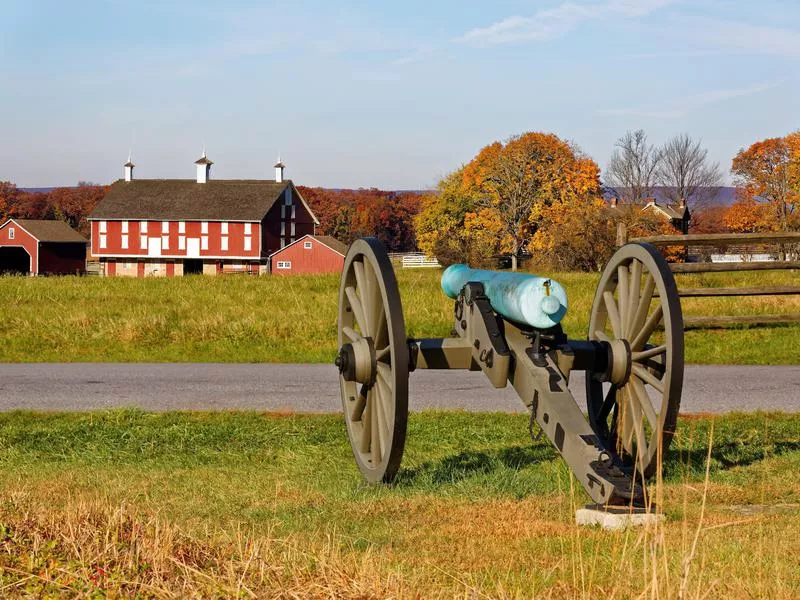
Getty Images
The turning-point battlefield is enshrined at the Gettysburg Military Park, a must-visit for all history aficionados. The museum honors the three-day battle with exhibits and guided field tours, a special film narrated by Morgan Freeman and the impressive Battle of Gettysburg oil painting. The David Wills House is on the 6,000-acre property, the home where Abraham Lincoln finalized his Gettysburg Address, the speech that freed the slaves and fulfilled the mission of the war.
Devil’s Den is also a unique vantage point, home to large boulders that were used as Union battle posts; an observatory deck here provides panoramic views of the field. Visiting the park is free, and you can easily spend an afternoon of solemnity and intrigue exploring the battlefield.
3. Philadelphia, Pennsylvania
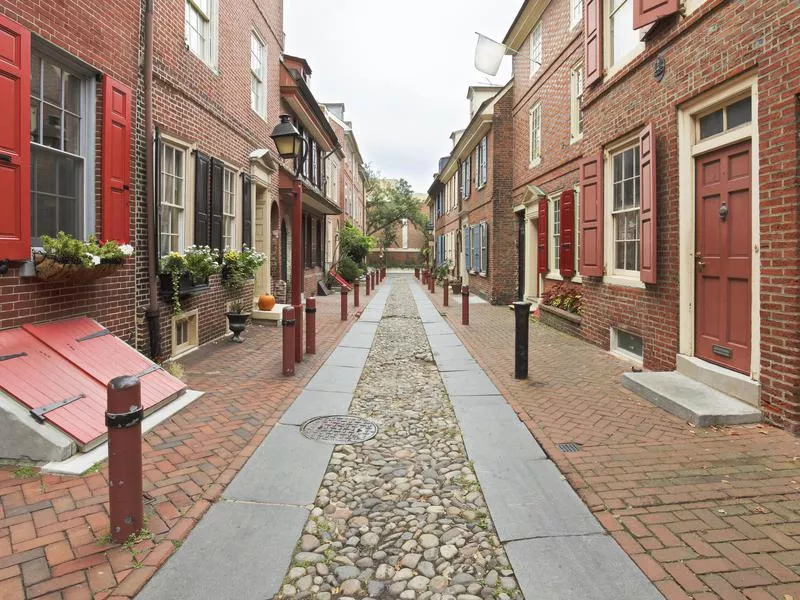
Getty Images
The stories that shaped Philadelphia could fill a history book all on their own.
The area first settled by Native Americans around 8,000 BC got its name after being settled by William Penn, an English Quaker, in 1682. A century later, the city became the center of the burgeoning American revolution; this is where resident Thomas Paine handed out his seminal work “Common Sense,” where people heard the Declaration of Independence for the very first time, in the yard of the State House, and where the capital of the U.S. was established after the Revolutionary War.
Today, the Liberty Bell and Independence Hall should lead any history-centered visit to Philadelphia, but beyond the bell there are many urban attractions to peruse. The Philadelphia Museum of Art is located in a Grecian temple building, exhibiting Renaissance paintings, Asian art and modernist pieces from Picasso, Matisse and more.
Beyond cheesesteaks (every bit as good as they’re made out to be), Philly has lots of great American and international eateries. Reading Terminal Market, one of the oldest markets in the U.S., is home to over 80 vendors, so there is no shortage of delicious options — craft donuts, apple dumplings, soft pretzels and roast duck are just a few of the food items to gorge on.
Rittenhouse Square is one of the most popular neighborhoods in Philly, the heart of Center City, one of the original squares planned by William Penn and now home to luxury buildings and high-end restaurants.
Best Historic Attraction — Independence Hall
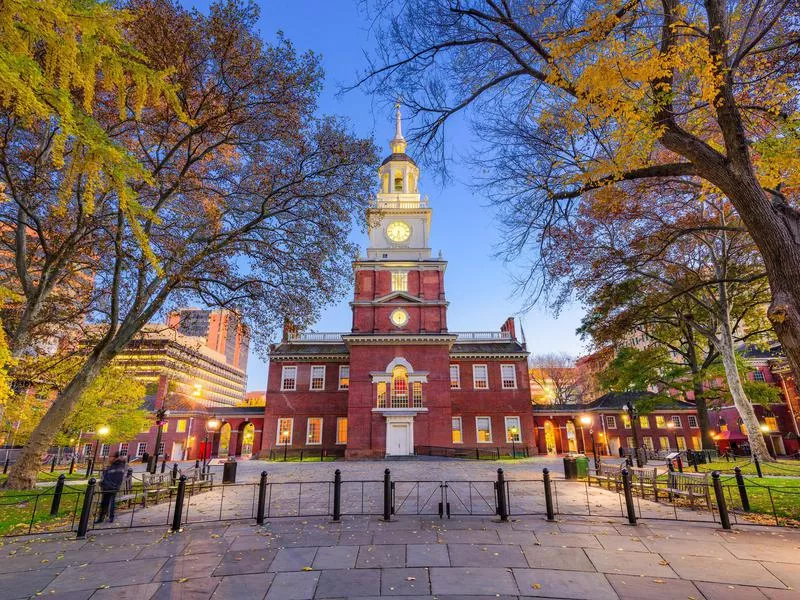
Getty Images
Look out for a jovial Ben Franklin outside of Independence Hall. This red-brick building was the meeting place of the Second Continental Congress during the Revolutionary War — the Declaration of Independence and Constitution were drafted and signed here. It is not an exaggeration to call Independence Hall the birthplace of the United States.
You’ll learn about the history of the building and the surrounding characters, like Andrew Hamilton, who planned the construction of the building. In the Assembly Room, George Washington was appointed commander-in-chief of the continental army.
Not only is the building itself important, but the decisions and documents that were born here are some of the most impactful in U.S. history — defining the structure of government.
2. Boston, Massachusetts
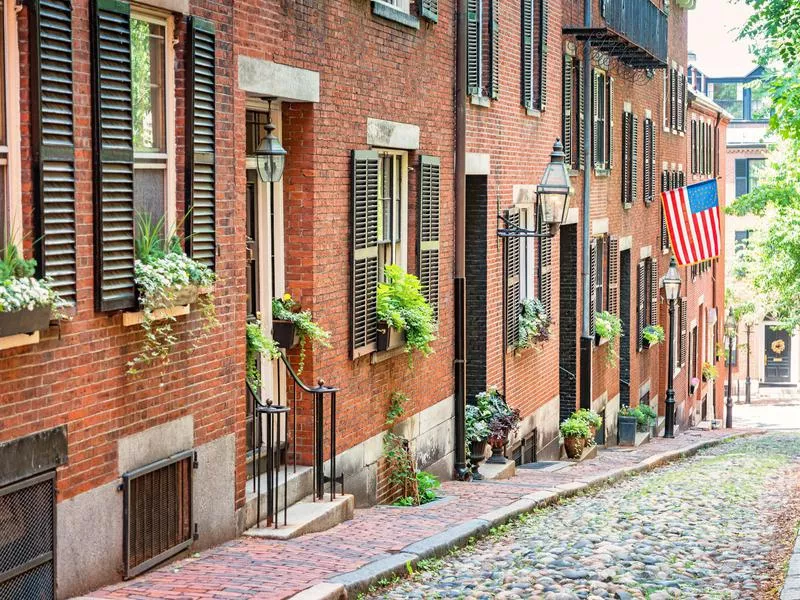
Getty Images
The third and final Massachusetts city on this list, Boston represents the state’s role as a hotbed of history. The Freedom Trail leads travelers through Boston’s most significant revolutionary sites, including the circa-1798 Massachusetts State House; the Old South Meeting House, where the Boston Tea Party began; and Paul Revere’s House, residence of the revolutionary who, in 1777, rode at midnight to warn John Hancock and Samuel Adams of the British approach.
Beyond its historic institutions, Boston is home to baseball, brownstones, boutiques, colleges around every corner, beer and many modern metropolitan flairs.
Food should be top of mind when sojourning in Boston — tasty lobster rolls, New England clam chowder, oysters, even grilled cheese. The Rose Kennedy Greenway is a strip of manicured park that winds through the city, a mecca of sun-soaking, picnics, exercise and relaxation during the warmer months.
Want to mix a historic education with exercise? There are many bike shops available to explore Boston on two wheels, such as Blue Bikes and Urban Adventours.
Best Historic Attraction — Boston Common
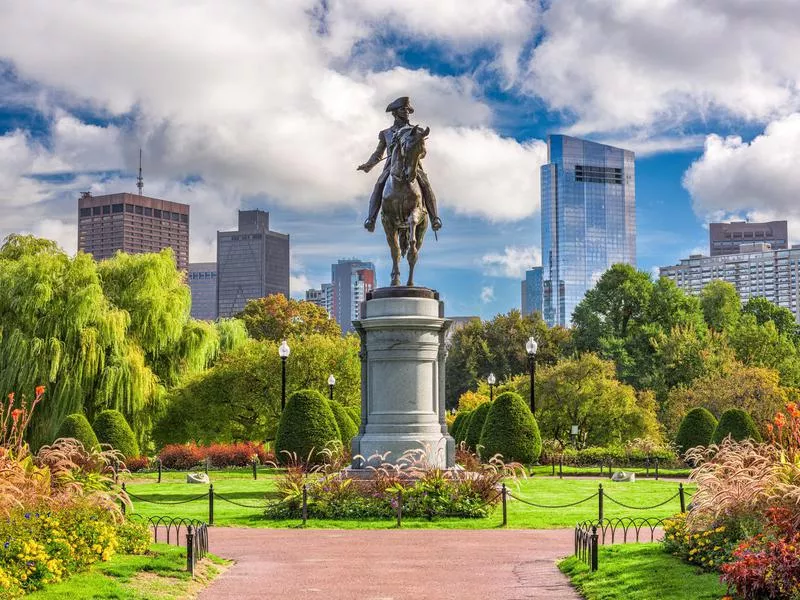
Getty Images
A major stop on the Freedom Trail, Boston Common is both picturesque and historic. It is America’s oldest park and has a rich past to match.
The plot of land was initially purchased by the Puritans and used first to graze livestock, then later as the site of Puritanical punishments (whipping post, pillory and stocks). Today the Common is a bit cheerier, offering activities like ice skating in the winter and outdoor theater shows on warm summer nights.
During the fall, the foliage here is unbeatable — vibrant reds, yellows and oranges decorate the park. There are many monuments in the Common, including the Robert Gould Shaw Memorial, dedicated to the leader of the first all-black infantry in the Northeast, and the ornate Brewer Fountain.
1. Washington, D.C.
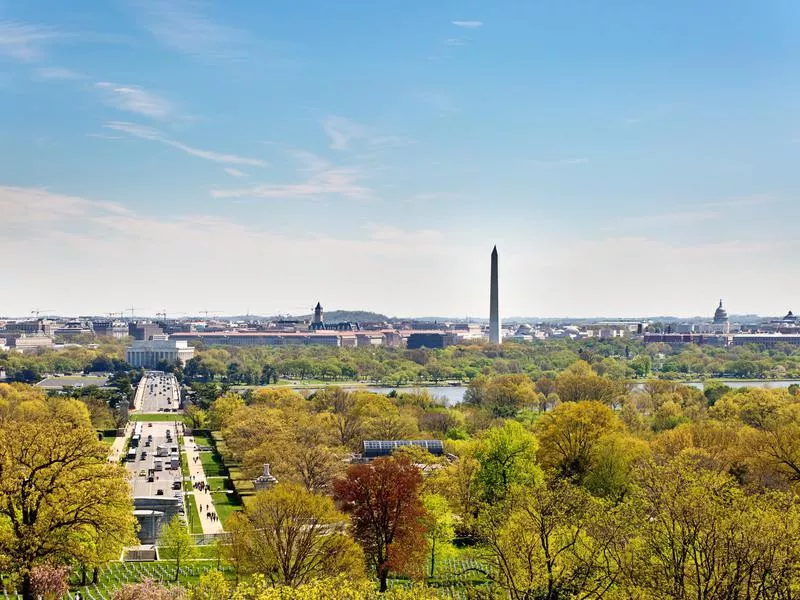
Getty Images
The nation’s capital is far more than just a politician's playground, although this stereotype does hold true in many aspects. There are innumerable historic attractions in the city — the White House, Washington Monument, Smithsonian Museum of Natural History and the Lincoln Memorial top the list. Politics may move slow, but the rest of D.C. is fast-paced and full of exciting neighborhoods, each with their own distinct flavors.
Erin Shields explains that D.C. earned the No. 1 spot because it “offers plenty of ways for visitors to soak up American history, world history and even art history. Travelers can explore the National Mall and the monuments nearby, including the Washington Monument, the Lincoln Memorial, the World War II Memorial and the Vietnam Veterans Memorial. What’s more, thanks to their affiliation with the Smithsonian, numerous D.C. museums are free to visit. The city also features ample lodging and dining options for travelers of all budgets.”
Best Historic Attraction — Lincoln Memorial
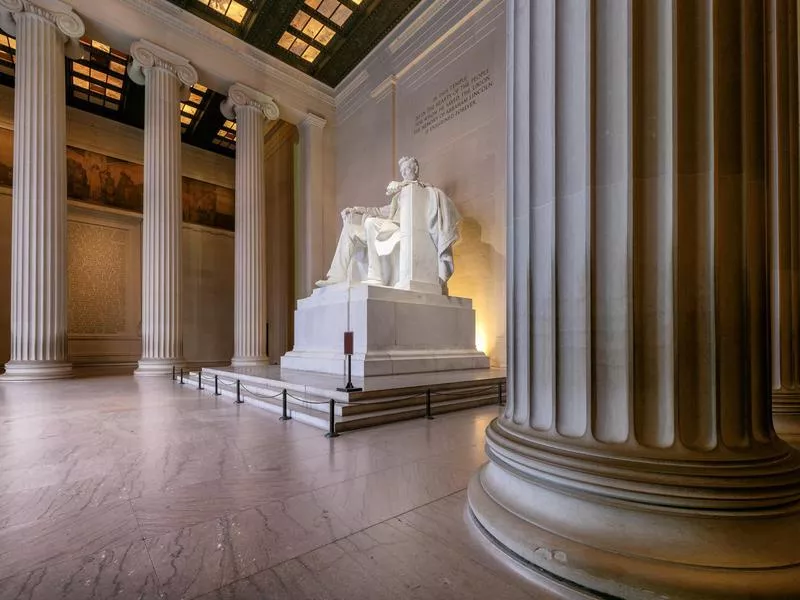
Getty Images
The Lincoln Memorial is a major historic monument that is important to visit because of all of the nation-altering events that have occurred on the acres it occupies. The lawn has been the site of numerous protests and Martin Luther King’s “I have a dream” speech, and it was on the steps of the memorial where legendary singer Marian Anderson gave her famous Easter Sunday performance in 1939, mixing Americana songs with black spirituals.
And that’s in addition to, of course, the speeches Lincoln himself gave here. The memorial contains etched-in-stone transcripts of two of Abraham Lincoln’s most famous orations, his inaugural speech and the Gettysburg Address.
Aside from the behemoth Lincoln statue, the architecture is striking — 38 Doric columns in the Greek revival style, with a view of the Washington Monument and Reflecting Pool.
